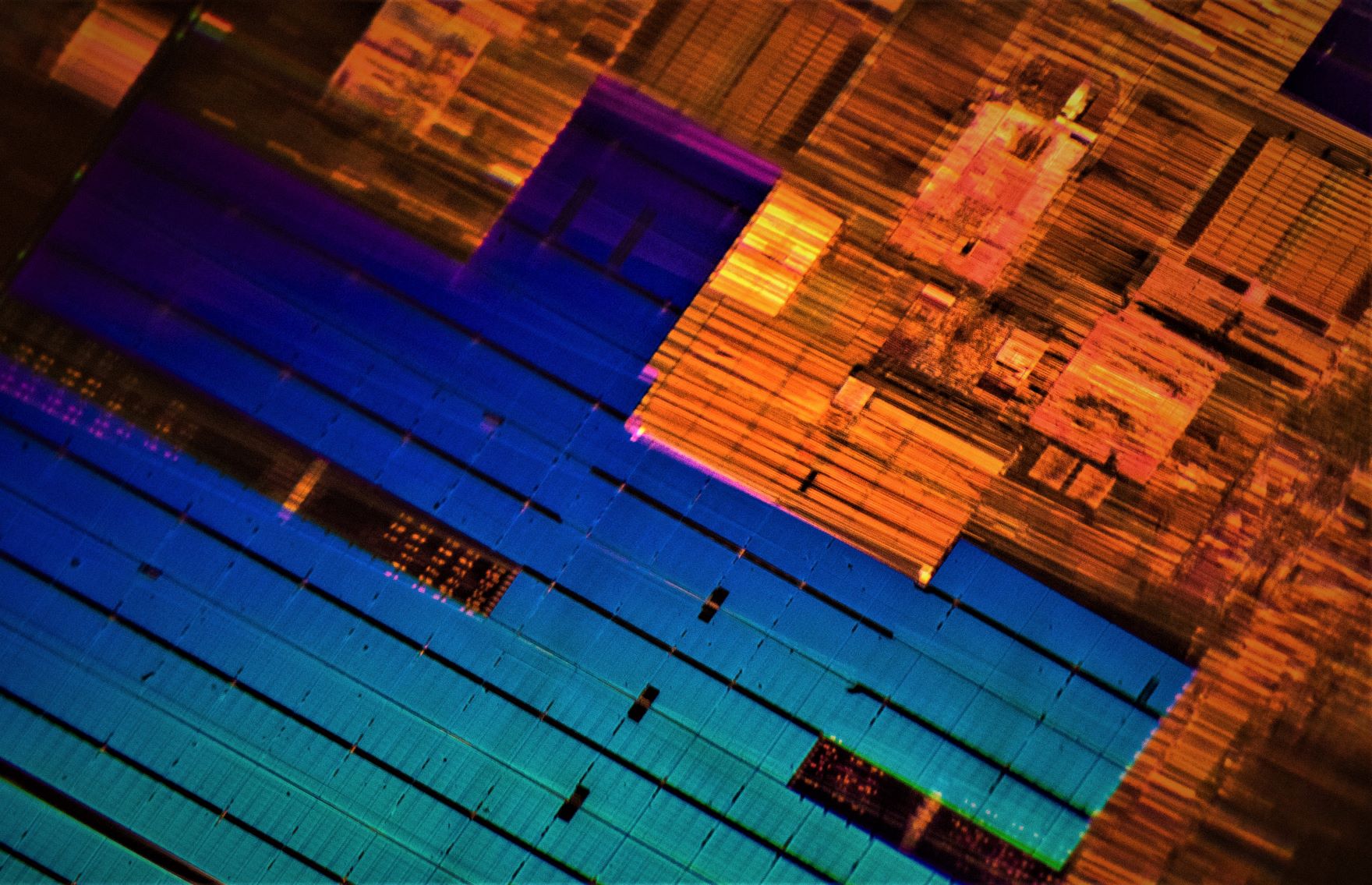
“Moore’s Law”, said Victor Peng decisively, “has run out of gas.”
The CEO of Xilinx was on stage with the CEOs of Arm and Micron, at an event hosted on Micron’s campus in Milpitas, California – and chaired by Goldman Sachs’ Tammy Kiely – grandly titled the Renaissance of Silicon.
“If there’s a renaissance,” he added, “it’s one born of burning necessity.”

Peng – a mercurial figure: all drumming fingers, quick ripostes and wry grimaces – was talking, of course, about Intel co-founder Gordon Moore’s dictum that the number of transistors on a microchip doubles every two years, while costs halve.
With it getting progressively slower and increasingly capital intensive to squeeze more transistors onto a piece of silicon, Peng is not alone in thinking that silicon’s Golden Age is, if not over, then the semiconductor market is facing the urgent need for useful mutation.
So, what’s this talk of a renaissance then?
Au Revoir to Moore’s Law
Speaking to a small crowd of investors and analysts at the event run by the Churchill Club (a “thought leadership” forum for the Silicon Valley community), Peng – despite a marked semiconductor market slowdown triggered by a range of macroeconomic and geopolitical factors – was broadly optimistic about the outlook.
He said: “I think a renaissance is going to be driven by the fact that there will be new architectures; and when I say architectures I mean the technology as a whole: at the technology level in transistor, device, packaging, advanced packaging, integration, micro-architecture and instruction set architecture and even architecture at the scale of entire data centres. A lot of people much smarter than I am say that the entire data centre is a computer. There’s going to be computing in the CPU, in the storage, memory in flight in the network adapter, even in a switch…
“That’s why there’s going to be a renaissance.”
New Drivers of Growth in the Semiconductor Market
Arm CEO Simon Segars, who also now sits on SoftBank Groups’ Board of Directors, said: “There’s been a combination of effects [driving a renaissance]: the delivery of really high-power computing in the cloud; the delivery of really low-power computing in handheld devices and IoT devices; bandwidth… Lots of things have come together, coupled with fundamental algorithm development. There’s 5G – and that’s going to consume silicon; there’s AI, autonomous vehicles.
He added: “All these things are new drivers of growth. But because of some of the constraints that exist through the run-out of Moore’s Law, it means you have to work harder to come up with something that delivers more performance, a level of power and a lower cost than you did last year. There’s no kind of freebie from optical scaling anymore, so you have to work harder – but the applications are, there, the compute power is there.”
Micro CEO Sanjay Mehrotra agreed: “I’ve been in this industry for 40 years and I’ve never seen a more exciting time… what used to be commodity solutions are now becoming very application-specific. Smartphones, you need a lot of low power DRAM, high-performance flash. Automotive: autonomous vehicles are like data centres on wheels: I took a ride in an AV in China recently and it had more than a terabyte of storage in the trunk and more than 100GB of DRAM in the trunk as well.
Kiely struck a more sober note, as the CEO’s talked up their own offerings.
The Goldman Sachs partner, who heads up the investment bank’s technology investments division, said: “One CEO in Taiwan I was talking to recently said they’re convinced this industry is going to look like the steel industry in a few years.” (They meant slowing innovation causing increasing commoditisation, she later clarifies to Computer Business Review; “an extreme view, of course!”).
Apple, Alibaba, Google: Chipping In
As she noted, one major potential disruptor is ongoing trend for companies not typically associated with the semiconductor industry to start taking a “more ASIC-type approach” to their business. (She was referring to an Application-Specific Integrated Circuit: an approach to integrated circuits designed for specific tasks, that can either be highly customised, or “platform” ASICs built on a more standardised silicon design intended to minimise development costs for complex systems, but retain specialism)
Arm CEO Segars suggested cost would be off-putting to most.
He said: “It’s highly unlikely that any OEM’s going to start building all the chips they could possibly want: it’s not for everyone, there’s a lot of cost involved, but a number of players will be doing that. Sanjay, you mentioned a supercomputer on wheels: that’s great if you were to make 10; but if you want to millions you need to scale it down and that is going to take a LOT of innovation – and people are looking at it and thinking ‘can I come up with a different type of solution’.
See also: Tesla Unveils New Chip, New Computer
To Xilinx’s CEO, domain-specific architectures are the future – and that is unlikely to be just ASIC-based approaches.
As he put it: “There are other ways you can have the same impact of what would be a customized piece of silicon now optimised for specific algorithms: the thing with ASIC is you’re you’re literally solving a very narrow band of a problem… what you need for an ASIC or fixed function chip, is some degree of stasis. The problem you are trying to solve has to be stable enough; if you are interfacing with standards those standards have to be stable – not least because it takes a while to implement and execute. You also need quite a bit of capital and really expert people in silicon level validation software and two to three years, end-to-end.

“There are going to be people that have those capabilities, but I think that that’s going to be the exception.”
His company is pushing hard for customers to think beyond “one size fits all” CPU scalar processing solutions.
GPUs run into traditional scaling challenges due to “inflexible, inefficient memory bandwidth usage” the company argues, noting that while traditional FPGA solutions provide programmable memory hierarchy, hardware development flow has been a barrier to high-volume adoption.
(Xilinx advocates the use of its adaptive compute acceleration platform, or ACAP, instead; a tightly coupled hybrid architecture that includes a network-on-a-chip and massive memory bandwidth enabled by programmable logic and integrated RAM blocks. With programmable memory hierarchies, this lets it be optimised for custom tasks.)
Is Industry Consolidation Hurting Innovation?
Yet as the market slows it is increasing in density; seeing market industry consolidation. Is this stymieing innovation? The question has been widely asked and when the audience was asked to raise hands if they worked with/for a semiconductor startup, there was just a small smattering of raised palms: the figure, many noticed, was far below what it would have been for a similar discussion 10 years ago however.
Micron CEO Sanjay Mehrotra emphasised that the company’s own acquisitions and other market shifts make Micron “the only company in the Western Hemisphere that actually is the designer and manufacturer and a supplier of semiconductor memory instrument solutions.” But that’s no bad thing, he claimed.
“Over the course of these 20 years, technology complexity has increased tremendously. Capital intensity has gone up substantially. R&D capex intensity has gone up so much that you need scale to really get online: consolidation is a natural byproduct of the changes that have occurred. Semiconductor manufacturing today is extremely challenging. You hear about China getting into it, but the complexity, the talent that is required to manage it is really, really getting more and more complex.
“Running manufacturing operations absolutely requires that every second you are watching the metrics to organically deliver the desired output. It is a major focus area. It ain’t easy, but there is a huge amount of institutional learning in the companies that have survived this industry’s cycles.”
Collaboration, Diversity Will Sustain the Industry
As Arm CEO Simon Segars put it: “Unlike other industries, the steel industry, I don’t think innovation is going to completely dry up because there are just too many other factors. And the fact especially because software is running all these devices, there are simply other factors pulling applications through that mean that we’re going to have to keep innovating. And the collaboration that goes on across this industry continues to amaze me. It’s not a case of ‘Victor works alone, creates his own design, hands it over to Mark Liu (the CEO of Taiwan Semiconductor Manufacturing Co. (TSMC), the largest contract chipmaker in the world) who sends him wafers back through the mail.
“There’s a tonne of stuff that has gone on to make that happen; industry collaboration that makes that happen.”
Whether at the edge, or in the data centre, the future of computing and of silicon is heterogeneous, the executives agreed, and any renaissance will happen. in fact, as users take icnreasingly eclectic approaches to deploying their semiconductors.
As Peng put it: “You don’t really want to do a lot of specialised processors. That may have been the state of the art one point in time, but it’s an exponentially changing world. What you really want is a different level of virtualisation at the hardware level and you want to be able to compute wherever it makes sense: near the storage, near the network, or near the processor.”
As Micron’s Sanjay Mehrotra concludes: “Software may be eating the world, but semiconductors get the first bite.”






